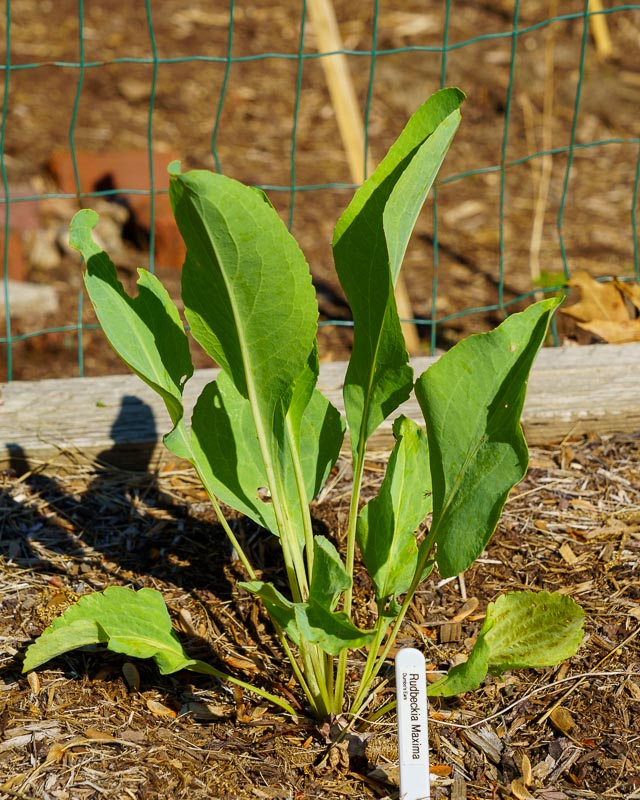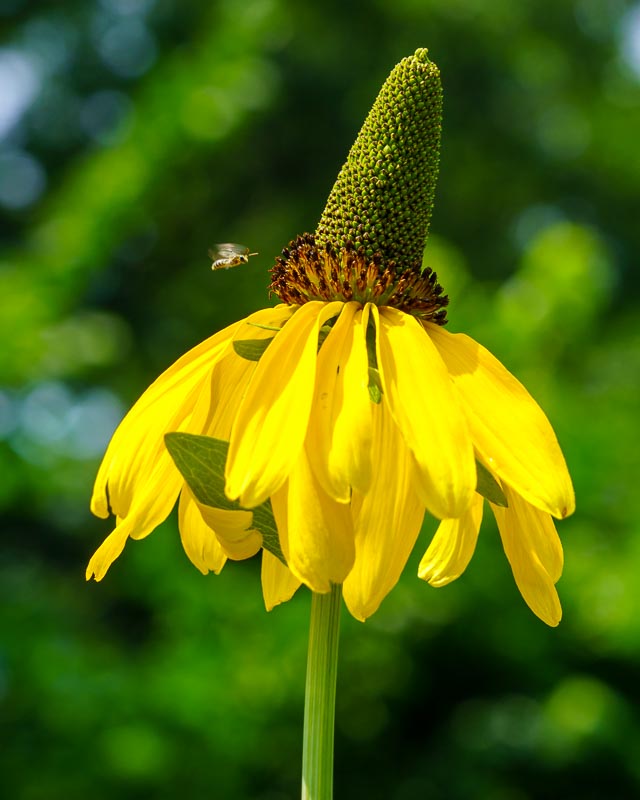Rudbeckia Maxima
| Attribute | Value |
|---|---|
| Common Name | Rudbeckia Maxima “Dumbo Ears” |
| Botanical Name | Rudbeckia Maxima |
| Mature Size | 5-7’ tall, 24-36” wide |
| Sun Exposure | Full Sun to Mostly Sunny |
| Soil Type | Normal, Clay, Sandy |
| Soil pH | Acidic |
| Bloom Time | Late Spring to Mid-Summer |
| Flower Color | Yellow |
| Care | Minimal seeding. Prefer moist, fertile well-drained soil. Although drought tolerant, Rudbeckia bloom better with ample moisture. Pinching can produce more compact plants in taller varieties. Can be divided every 4 years in spring. Spent foliage can be cut back to 6" for a flush of new growth. |
| Soil | This perennial plant can actually tolerate a fairly wide range of soils – even flooded or drought inflicted soils for short periods of time. However, your great coneflower plant will truly thrive and reach its tallest height in moist, organically-rich sandy or clay soils. |
| Temperature and Humidity | Giant coneflower plant needs lots of sunlight to thrive. It can also grow in mostly sunny locations such as lightly shaded areas of your garden. However, too much shade will thwart the growth of your Rudbeckia and prevent it from flowering. So, make sure to plant it under full sun to see the beautiful yellow blooms of the plant. |
| Fertilizer | You can fertilize your plant by using a water soluble feed. Feed your great coneflower once every two weeks in the summer blooming season (June). |
| Pruning | You can prune or deadhead your cabbage leaf coneflower so that new blooms appear during bloom time. |
| Overwintering | Rudbeckia fulgida and hybrid 'Goldsturm' (Rudbeckia fulgida var. sullivantii) are also known as black-eyed Susan. They are hardy in USDA zones 3 through 9. Deadheading perennial rudbeckias will also encourage continued blooming. In colder climates, cut the plants back to a few inches tall after they finish blooming. After the first hard frost, cover the plants with a foot of loose mulch, such as straw. In warmer climates where snow is light or rare, you can choose to leave the plants until spring to shelter and feed wildlife, or cut the plants back. Any diseased plants should be removed and placed in the trash. Remove the loose mulch in spring as soon as the weather warms. |
| Source | https://www.epicgardening.com/rudbeckia-maxima/ |



